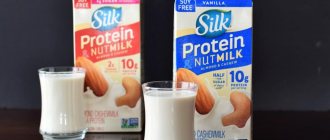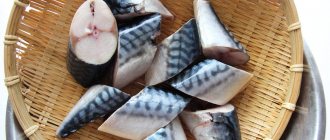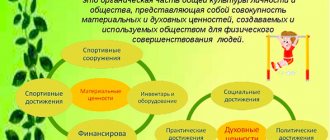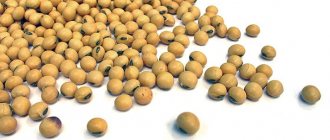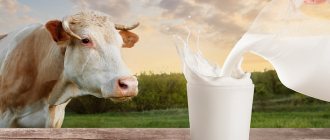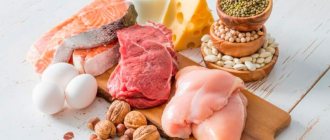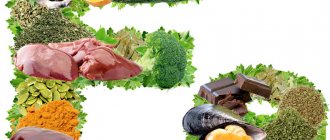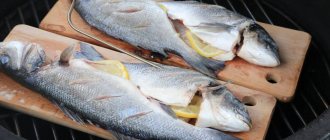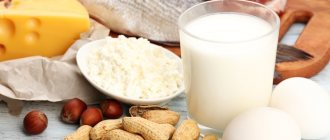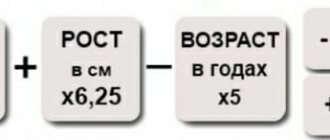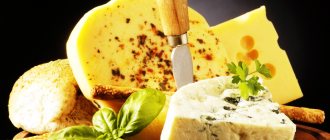Protein is an important building material of our body. Every cell of the body consists of it, it is part of all tissues and organs. In addition, a special type of proteins plays the role of enzymes and hormones in a living organism.
In addition to its construction function, protein can also be a source of energy . And in case of excess protein, the liver “prudently” converts the protein into fats, which are stored as reserves in the body (how to get rid of such fat?).
The human body contains 22 amino acids : the body can synthesize 13 amino acids independently from existing building materials, and 9 of them it can only obtain from food.
In the process of assimilation by the body, proteins break down into amino acids, which in turn are supplied to different parts of the body to perform their basic functions. Proteins (in the form of amino acids) are part of the blood, are components of the hormonal system, the thyroid gland, influence the growth and development of the body, regulate the water and acid-base balance of the body.
Dairy products
Cottage cheese, kefir, yogurt, yogurt, fermented baked milk and any other milk-based products contain at least 8 g of protein. These foods are often enriched with many useful substances, so they should definitely be included in your diet.
Casein is a protein from low-fat cottage cheese that is 97% digestible and does not overload the body with extra calories.
Greek yogurt, which contains 10 g of protein, is especially beneficial. This low-fat product is rich in probiotics, B vitamins, magnesium and calcium. In addition to casein, yogurt contains whey protein. Their combination significantly reduces the amount of lactose. Therefore, yogurt is a great option for those who are lactose intolerant.
Beneficial properties of protein and its effect on the body
Depending on their specialization, proteins perform various functions in the body. Transport proteins, for example, deliver vitamins, fat and minerals to all cells of the body. Catalyst proteins accelerate various chemical processes occurring in the body. There are also proteins that fight various infections, being antibodies to various diseases. In addition, proteins are sources of important amino acids, which are necessary as building materials for new cells and strengthening existing ones.
Interaction with essential elements
Everything in nature is interconnected, and everything also interacts in our body. Proteins, as part of the overall ecosystem, interact with other elements of our body - vitamins, fats and carbohydrates. Moreover, in addition to simple interaction, proteins are also involved in the transformation of one substance into another.
As for vitamins, for every gram of protein consumed, you need to consume 1 mg of vitamin C. If there is a lack of vitamin C, only the amount of protein that is enough for the vitamin contained in the body will be absorbed.
Dangerous properties of proteins and warnings
Signs of lack of protein in the body
- Weakness, lack of energy. Loss of performance.
- Decreased libido. Medical tests may reveal a deficiency of certain sex hormones.
- Low resistance to various infections.
- Violation of the functions of the liver, nervous and circulatory systems, functioning of the intestines, pancreas, metabolic processes.
- Muscle atrophy develops, growth and development of the body in children slows down.
Signs of excess protein in the body
- Fragility of the skeletal system, resulting from acidification of the body, which leads to the leaching of calcium from the bones.
- Impaired water balance in the body, which can also lead to swelling and inability to absorb vitamins.
- The development of gout, which in the old days was called “rich people’s disease,” is also a direct consequence of excess protein in the body.
- Excess weight can also be a consequence of excessive protein consumption. This is due to the activity of the liver, which converts excess protein for the body into adipose tissue.
- Colon cancer, according to some scientific sources, can be a consequence of the increased content of purines in food.
Factors influencing protein content in the body
Composition and quantity of food .
Since the body cannot synthesize essential amino acids on its own. Age. It is known that in childhood the amount of protein necessary for the growth and development of the body is more than 2 times higher than the protein requirement of a middle-aged person! In old age, all metabolic processes proceed much more slowly, and, consequently, the body’s need for proteins is significantly reduced.
Physical labor and professional sports . To maintain tone and performance, athletes and people engaged in intense physical labor require a 2-fold increase in protein intake, since all metabolic processes occur very intensively in their body.
Protein food for health
As we have already said, there are 2 large groups of proteins: proteins that are sources of nonessential and essential amino acids. There are only 9 essential amino acids: threonine, methionine, tryptophan, lysine, leucine, isoleucine, phenylalanine, valine. It is these amino acids that our body especially needs, since they are absorbed only from food.
In modern dietetics there is such a thing as complete and incomplete protein . A protein food that contains all the essential amino acids is called a complete protein; an incomplete protein is a food that contains only some of the essential amino acids.
Foods containing complete, high-quality protein include meat, dairy, seafood and soy. The top spot in the list of such products belongs to eggs, which, according to medical criteria, are considered the gold standard of complete protein.
Incomplete protein is most often found in nuts, various seeds, cereals, vegetables, legumes, and some fruits.
By combining foods containing incomplete protein with complete protein in one meal, you can achieve maximum absorption of incomplete protein. To do this, it is enough to include only a small amount of animal products in your diet, and the benefits for the body will be significant.
Protein and vegetarianism
Some people, due to their moral and ethical convictions, completely excluded meat products from their diet. The most famous of them are Richard Gere, the Blue Lagoon star Brooke Shields, the magnificent Pamela Anderson, and the unrivaled Russian comedian Mikhail Zadornov.
However, in order for the body not to feel deprived, a complete replacement for fish and meat is necessary. For those who consume milk, cottage cheese, and eggs, it is, of course, easier. Those who have completely abandoned animal proteins have to be very creative so that the body does not suffer from a lack of protein. This is especially true for children’s fast-growing organisms, which, with a lack of amino acids, can slow down growth and normal development.
Thanks to certain studies related to the study of the absorption of plant protein by the body, it became known that certain combinations of such protein can provide the body with a full set of essential amino acids. These combinations are: mushrooms-cereals; mushrooms-nuts; legumes–cereals; legumes – nuts, as well as different types of legumes, combined in one meal.
But this is just a theory and it will take time before it is fully confirmed or refuted.
Among plant protein products, the title of “champion” in terms of protein content goes to soy. 100 grams of soy contains more than 30% complete protein. Japanese miso soup, soy meat and soy sauce are not all the delicacies that are prepared from this amazing product. Mushrooms, lentils, beans and peas contain from 28 to 25% incomplete protein per 100 grams.
Avocado is comparable in protein content to fresh cow's milk (it contains about 14% protein). In addition, the fruit contains Omega-6 polyunsaturated fatty acids and dietary fiber. Nuts, buckwheat, Brussels sprouts and cauliflower, as well as spinach and asparagus complete our list of foods rich in plant protein.
Proteins in the fight for slimness and beauty
For those who want to always remain fit and beautiful, nutritionists recommend adhering to a certain diet before and after training:
- 1 In order to build muscle mass and get an athletic figure, it is recommended to eat protein foods an hour before training. For example, half a plate of cottage cheese or another fermented milk product, chicken breast or turkey with rice, fish with salad, omelet with oatmeal.
- 2 To achieve an athletic figure , eating is allowed within 20 minutes after training. Moreover, you should eat protein and carbohydrate foods, but not fats.
- 3 If the goal of the workout is to gain slimness and grace, without building muscle mass, then protein foods should be consumed no earlier than 2 hours after the end of the workout. Before training, do not eat protein for 5 hours at all. Last meal (carbohydrates) 2 hours before class.
- 4 And now about maintaining proper metabolism in the body. According to nutritionists, it is recommended to consume proteins in the afternoon. They maintain a feeling of fullness for a long time, and this is an excellent prevention of heavy night meals.
- 5 Beautiful skin, lush and shiny hair, strong nails are the result of a sufficient amount of essential amino acids in the diet, acting in conjunction with vitamins and microelements.
We have collected the most important points about squirrels in this illustration and will be grateful if you share the picture on a social network or blog with a link to this page:
Attention! The information is for informational purposes only and is not intended to make a diagnosis or prescribe treatment. Always consult a specialized doctor!
Tatyana Eliseeva chief editor of the Food+ project
Ask a Question
Rating:
9.6
/10
Votes: 62
Usefulness of material 10
Reliability of information 9.2
Formatting of Article 9.7
Cereals
It was not for nothing that Hercules received its name in honor of the ancient Greek hero. Oatmeal (rolled oats) contains 10–12 g of protein, as well as all minerals and vitamins. Oatmeal is easily digestible, so this porridge will give you strength for the whole day. There is an exotic type of cereal - quinoa, which contains 14 g of protein. This is one of the most useful products, which, unfortunately, is not always easy to find in stores. On average, grains contain 6 g of protein and many other healing substances.
Protein diet for weight loss
Such diets are popular and have already proven their effectiveness.
Many weight loss diets are based on the principles of protein nutrition. For example, the Dukan , the Kremlin diet , etc.
Among the advantages of such diets are:
- rapid weight loss;
- losing weight without hunger, you are always full;
- no need to count calories and limit portions.
At the same time, there are also disadvantages:
- Excess protein in the diet increases the load on all organs and systems of the body, which can lead to serious consequences.
Mushrooms
Mushrooms contain about 3.1 g of protein, but are composed entirely of protein. The following types of mushrooms are extremely useful: shiitake, chaga, honey mushrooms, boletuses, porcini mushrooms, boletus mushrooms. They can be added to soup or cooked in any form: boiled, dried, fried. It is very important to choose mushrooms collected from environmentally friendly places, because mushrooms absorb substances from the environment.
Foods that contain a lot of protein should be eaten every day. It is very harmful to refuse such food, but you should not abuse it either. You can prepare a variety of dishes by adding protein foods to them.
Where else is protein found?
It is worth highlighting hard cheeses, in particular Parmesan. The king of cheeses boasts a protein content of 35 g, which is even higher than salmon caviar. Despite the high nutritional value, eating Parmesan alone is hardly appropriate, however, when choosing cheese, you should give preference to hard varieties with a good composition, such as Dutch, Russian, Gouda, Poshekhonsky, etc.
It is important not to forget that cheeses contain a large amount of animal fats, so they are welcome in the diet in moderation.
Summarize
Protein is essential in the diet - it is a building material for cells and tissues, a catalyst for chemical and metabolic processes in the body, and a protector against infection. Proteins have many vital functions. Therefore, protein deficiency will immediately affect your health, appearance and quality of life.
Proteins are found in foods of animal and plant origin. Both are important because they are sources of different types of amino acids - some of which our body does not produce. Therefore, you need to eat the required amount of proteins per day.
When planning your diet, remember: not all meat and fish products are healthy - semi-finished products and processed meat products, on the contrary, are harmful.
Choose the right foods, supply your body with enough proteins. And you will always feel in good shape and look great.
Material prepared by: Alisa Guseva Cover photo: Depositphotos
Sources
Choosing Healthy Protein Protein Protein and Heart Health Proteins
Transport function
Some proteins are capable of attaching various substances and transporting them to various tissues and organs of the body, from one place in the cell to another. For example:
- lipoproteins - responsible for the transfer of fat.
- hemoglobin - transport of oxygen, blood protein hemoglobin attaches oxygen and transports it from the lungs to all tissues and organs, and from them transfers carbon dioxide to the lungs;
- haptoglobin - heme transport),
- transferrin - iron transport.
Proteins transport calcium, magnesium, iron, copper and other ions in the blood.
The composition of cell membranes includes special proteins that ensure the active and strictly selective transfer of certain substances and ions from the cell to the external environment and back. The transport of substances across membranes is carried out by proteins - Na+,K+-ATPase (anti-directional transmembrane transport of sodium and potassium ions), Ca2+-ATPase (pumping calcium ions out of the cell), glucose transporters.
Enzymes
Biological catalysts of protein nature, which significantly accelerate all ongoing biochemical processes. Normal metabolism is simply impossible without these compounds. All processes of synthesis and decay, assembly of molecules and their replication, translation and transcription, and others are carried out under the influence of a specific type of enzyme. Examples of these molecules are:
- oxidoreductases;
- transferases;
- catalase;
- hydrolases;
- isomerases;
- lyases and others.
Today, enzymes are also used in everyday life. Thus, in the production of washing powders, so-called enzymes are often used - these are biological catalysts. They improve the quality of washing if the specified temperature conditions are observed. Easily binds to dirt particles and removes them from the surface of fabrics.
However, due to their protein nature, enzymes cannot tolerate too hot water or proximity to alkaline or acidic drugs. Indeed, in this case, the process of denaturation will occur.
Animal sources
Meat and meat by-products are a quick way to obtain a spectrum of amino acids. It is animal protein that has the maximum fitness developed during evolution. This happened due to the constant presence of animals near people. Meat products often require long-term preliminary cooking - the protein is pre-split and becomes prepared for rapid absorption.
Of animal products, the maximum amount of protein contains:
- fish and seafood - tuna, hake, cod, shrimp, oysters, squid, etc. Sometimes up to 30 grams of macronutrients per 100 grams of weight;
- poultry - turkey, chicken;
- meat - beef, veal, pork, rabbit, lamb;
- offal - liver, heart, kidneys.
Proteins from meat
Meat products were not at the top of the rankings. However, they occupy average values ranging from 15-21 grams per 100 grams. Which is a much narrower range than that of plant foods. The different types of meat are arranged as follows:
| Source | Amount of component per 100 grams of wet weight |
| Turkey | 21,5 |
| Rabbit | 21,1 |
| Chicken | 21 |
| Mutton | 20 |
| Veal | 19,7 |
| Beef | 18,9 |
| Pork liver | 18,8 |
| Chickens | 18,7 |
| Beef liver | 17,4 |
| Pork kidneys | 16,7 |
It is worth noting that poultry meat has a much lower calorie content due to its lower fat content. In contrast, pork is extremely fatty – up to 25 grams.
Average content of important amino acids in meat:
- Tryptophan - 0.26;
- Lysine - 1.62;
- Phenylalanine - 1.65;
- Methionine - 0.86;
- Leucine - 2.40;
- Greonine - 0.86;
- Valine - 0.70;
- Arginine - 1.08;
- Histidine - 0.60;
- Isoleucine - 0.70.
From fish and seafood
Another high protein source is seafood. The benefit of fish and seafood consists of a greater amount of fat-soluble acids. Such acids are necessary for a person to maintain full functioning. Product rating:
| Source | Amount per 100 grams wet weight |
| Sturgeon caviar | 28,9 |
| Red caviar | 23,6 |
| Tuna | 22,7 |
| Chum salmon | 22 |
| Pink salmon | 21 |
| Shrimps | 20,9 |
| Salmon | 20,8 |
| Saira | 20,4 |
| Halibut | 18,9 |
| Squid | 18 |
Dairy sources
The milk itself contains a small amount of protein. The concentration is greater in derivatives - dairy products, when the cooking process is associated with the evaporation of excess moisture.
List of products containing milk proteins in descending order:
| Source | Amount per 100 grams wet weight |
| Cheese | 23-27 |
| Cottage cheese | 22 |
| Low-fat cottage cheese (5% and below) | 18 |
| Brynza | 17,5 |
| Kefir | 3 |
| Milk | 2,5 |
Cereals
The leaders among cereals in terms of macronutrient content are peas and chickpeas. One of the non-legume grains that is popular on the table is buckwheat. Conventional cereals contain a large amount of amino acids, especially when compared with milk:
| Source | Amount per 100 grams wet weight |
| Peas | 23 |
| Beans | 22 |
| Buckwheat core | 12,6 |
| Millet | 12 |
| Oatmeal | 11,5 |
| Wheat | 7,5 |
| Rice | 7 |
| Rye | 4,5 |
The role of macronutrients in the body
Main functions of building material:
- Maintenance of muscle mass and most of the connective tissue of the muscles with the skeleton (cartilage along with other connective tissues). In addition, they form the cytoskeleton of cells, protecting and maintaining their shape.
- The basis of hormones. The lack of certain amino acids affects their production, causing a decrease in immunity, health, and development potential of the body. The biochemical reactions of the breakdown of nutrients (metabolism) are seriously affected.
- It is the building material of the connective tissues of the circulatory system. With a lack of even one type of amino acids, the vessels become fragile and cannot withstand high loads. It becomes difficult to stretch when pumping large volumes of blood. As a result, blood pressure increases, pain and fatigue occur.
- Protein cells of various crystal structures play a role in the cell signaling system and the body's immune response.
The substance is the basis for the structure of all internal organs. Especially the constantly working heart, which is the same example of muscle tissue.
